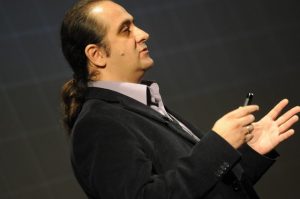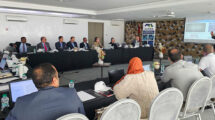Professor Anastas Mishev, Member of the Board of MARNET, talks about the opportunities and challenges that Research and Education Network (REN) organisations are currently facing in the SEE region. Anastas analyses the steps being undertaken to bridge the digital divide between SEE and the rest of Europe and shares his hopes for the future of R&E in this part of the world.
Interview by: Rosanna Norman, GÉANT
Anastas, could you give our readers a brief overview of the RENs that make up the SEE region? Which major R&E projects and funding initiatives are benefitting SEE?

In the last several years GÉANT has been strongly engaged with RENs in the SEE region. Through its SEE Forum, a platform gathering representatives from the RENs in Albania, Greece, North Macedonia, Serbia, Montenegro, Kosovo*, Cyprus, Turkey, Bulgaria, and Hungary, it facilitates discussion and collaboration on the common challenges shared by these organisations.
The heterogeneous nature of these RENs makes this forum even more useful, since the more developed organisations, such as GRNET, KIFU, or ULAKBIM are able to share their valuable experience with the smaller ones, such as CYNET, MARNET, RASH, BREN, or MREN, or with those that are at embryo stage like the Kosovo* Research & Education Network, KREN.
For instance, Bosnia and Herzegovina, the only European country that has not yet established an REN, has been very active in the SEE Forum drawing experience and receiving support toward the establishment of a national network.
GÉANT-led projects are among the most vital sources of additional funding for all RENs in the SEE region, since all of these RENs use state-funding models and face huge challenges in personnel retention and the overall recruitment process.
The RENs and their constituents are also collaborating on other important matters for the academic community, with Open Science currently being the principal one. Through projects such as NI4OS-Europe, most of the SEE countries are trying to identify their relevant EOSC services and offer them
to the wider research community, as well as to develop policies that will strengthen the role of Open Science at a domestic level.
To support their development, some of the RENs, like KREN most recently, use alternative funding
mechanisms such as the World Bank. KREN was established and equipped through the KODE project, with the objective to improve access to better quality and high‐speed broadband services in Kosovo*. Similar steps are being taken by RASH with the Western Balkan Investment Fund, aiming to build a national and regional networking infrastructure capable of connecting the regional HPC centres.
What are the major opportunities for SEE on the horizon?
The GÉANT SEE Forum has become a valuable platform for the exchange of ideas and mutual support for RENs in the region. The more developed RENs keep sharing their experience and offer practical help to the developing and smaller RENs in the region, building and strengthening the human connections on top of the data network.
There are high expectations that the GN4-3N project will strengthen the academic networking infrastructure in the SEE region, especially for the smaller and less developed RENs as this will enable a further step in the effort to close the digital divide that exists not only within SEE, but also between the region and the rest of Europe.
What are the main challenges and obstacles faced by RENs in this part of Europe?
RENs in the SEE region, although different in size and development, share a great deal of challenges. Most of the SEE countries experience strong political influences at REN management level, with governments either directly appointing directors or exercising strong influence through the elected board. This can be considered a very limiting factor for the development of RENs as crucial providers laying the foundation not only for the digitalisation of R&E, but of society in general.
Another limiting factor for the further development of the SEE RENs is their position within the state administration. Most of the RENs are state agencies, with their employees being public servants. This affects the remuneration, especially of the highly trained technical staff earning salaries considerably lower than those offered by the private sector for the same qualifications. On the other side, very few of the SEE RENs are actively involved in the national research and innovation development processes. A contrasting example is GRNET, which thanks to recent legislative changes, has become a leading institution driving the Greek e-Government advancements.
Could you tell us about your plans for the forthcoming 2021 SEE User Forum and your objectives for this first conference?
Due to the COVID-19 pandemic, plans for a big SEE regional event had to be postponed. I am delighted to announce that a GÉANT-organised 2021 SEE User Forum will take place on 3-4 November 2021, from 10:00 -13:00 CET, and it will be a virtual event. The forum, which will be supported by regional and pan-European EOSC-related projects such as NI4OS-Europe and EOSC Future, has the goal to showcase Open Science services and user engagement along with users’ technical challenges, their needs for these services, and how GÉANT can help address such needs through the SEE Forum. I strongly believe that this will further emphasise the important role of RENs as key EOSC enablers and supporters.
The 2021 SEE User Forum will take place on 3 – 4 November from 10.00-13.00 CET, it will be fully online and free of charge to all participants.
Registration is already open: https://events.geant.org/event/904/
*This designation is without prejudice to positions on status, and is in line with UNSCR 1244/1999 and the ICJ Opinion on the Kosovo declaration of independence
This article is featured on CONNECT37! Read or download the full magazine here







